
THIS ARTICLE IS MORE THAN FIVE YEARS OLD
This article is more than five years old. Autism research — and science in general — is constantly evolving, so older articles may contain information or theories that have been reevaluated since their original publication date.
15 November 2016: Day Four
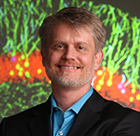
Associate professor of cell biology, Duke University
Of Mice, Men and Rats: High-confidence autism genes were the topic of the “Current Perspectives in Autism Spectrum Disorder: From Genes to Therapy” minisymposium today. Brian O’Roak, an assistant professor at Oregon Health and Science University, presented on the rapid advances in the discovery of these genes but also highlighted how far yet there is to go on the genetic front. In addition, Rodney Samaco, an assistant professor at Baylor College of Medicine in Texas, made an interesting comparison of mouse and rat models of Rett syndrome. According to his research, rat models may have advantages over mouse models when it comes to defining autism phenotypes.
To Sing or Laugh: Rich Mooney, a professor at Duke University, gave a phenomenal talk on the brain circuits underpinning vocal communication using songbirds and mice. He neatly highlighted the power of songbirds to study learned vocal communication in a series of elegant studies. He also drove home that mouse vocalizations are innate, not learned — much like laughter or screams. Using sophisticated genetic approaches, he and his collaborator Fan Wang, an associate professor at Duke, also have uncovered a neural circuit for this form of communication.
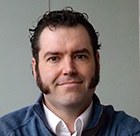
Assistant professor, Oregon Health and Science University
Tweet up: Highlights of Tuesday at SfN for me included the Spectrum Twitter chat. On the chat we had a lively discussion of the usefulness of basic science for clinical researchers, the need to think about neurodevelopmental disorders beyond their clinical boundaries and why scientists need to communicate with the public.
Minisymposium marvel: I was fascinated by two talks at this afternoon’s minisymposium “Current Perspectives in Autism Spectrum Disorder: From Genes to Therapy.” Rodney Samaco discussed his work characterizing syndromic autism models in both mice and rats. He made a compelling argument for researchers to work together on rigorous approaches that leverage the strength of both systems. At the same symposium, Chiara Manzini, an assistant professor at The George Washington University, gave an elegant talk on her group’s discovery of sexually dimorphic phenotypic findings from modeling a recessive autism risk gene, CC2D1A, and the need for more work in this important area. She ended with a call for more women to take the lead in neuroscience.
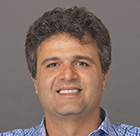
Professor of neurology, David Geffen School of Medicine, University of California, Los Angeles
Stem cells for research: One notable poster today came from Eric Levine, a professor at the University of Connecticut. His team created neurons from pluripotent stem cells from individuals with Angelman syndrome, a condition linked to autism. They found that Angelman neurons had immature neuronal membrane excitability and atypical synaptic plasticity, which is thought to be associated with the condition. The study highlights the feasibility of using human-derived stem cells to create neurons to study neurodevelopmental disorders and to search for treatments.
Robert E. Chason Endowed Chair in Translational Research, Professor, University of California, Davis
Cognitive challenges: Mice missing FMR1, the gene tied to fragile X syndrome, do not consistently display cognitive impairments — a conundrum at odds with the core intellectual disabilities that characterize the syndrome in people. Two excellent posters today described challenging episodic memory tasks that successfully detected significant cognitive deficits in FMR1 mutant rodents as compared with controls. Brittney Cox, postdoctoral researcher in Gary Lynch’s lab at the University of California, Irvine, used a serial odor recognition task to detect cognitive deficits in FMR1 mice. In addition, Antonios Asiminas, a graduate student in Emma Wood and Paul Dudchenko’s lab at the University of Edinburgh, and his colleagues found that FMR1 rats failed a complex object-place-context recognition task. Both of these cognitive assays were sensitive to pharmacological rescue, which may support their use in preclinical therapeutic discovery.
For more reports from the 2016 Society for Neuroscience annual meeting, please click here.
14 November 2016: Day Three
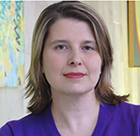
Assistant professor of pharmacology and physiology, and integrative systems biology, George Washington University
Multiple highlights: There were many exciting presentations today, ranging from the role of stress and genetics in altering the microbiome to developing better cellular and animal models of autism. Krishna Vadodaria, a research associate in Fred Gage’s lab at the Salk Institute for Biological Studies, developed methods to obtain serotoninergic neurons from induced pluripotent stem cells.
By identifying a set of four transcription factors that trigger development towards serotoninergic fate, the Salk researchers were able to generate human serotoninergic cells in culture. This is important because studying these cells and using drugs to alter their function will allow us to better understand multiple psychiatric conditions with altered serotonin function, including autism.
Combined approach: In the “Autism: Models” poster sessions, Madhurima Benekareddy from Roche in Switzerland presented an approach combining functional magnetic resonance imaging and DREADDs to identify brain circuits involved in social behavior in mice. Her work revealed a link between the prefrontal cortex and the habenula, an area in the brain stem, that controls preference for a novel mouse in the three-chamber test, one of the best established tests of sociability.
Inherited habits: Remco Molenhuis, from the University of Utrecht in the Netherlands presented an analysis of several novel mouse strains that mimic human genetic diversity. His data showed that different behaviors, such as locomotion and digging, are heritable, whereas social recognition and grooming are less so. The analysis could lead to the identification of genetic loci that correlate with specific behaviors. Both his and Benekareddy’s posters presented innovative approaches for trying to understand circuits and genes involved in social behavior. Understanding how these behaviors are regulated may lead to insights into how sociability is affected in autism.
Reader in developmental and stem cell biology, King’s College London
Tour de force: Two posters stood out to me today. The first was by Remco Molenhuis, a student at the University of Utrecht. He described a ‘tour de force’ analysis of behaviors and genome association studies in more than 40 mouse strains, and developed new data analysis approaches to quantify stereotypical behaviors.
Elegant approach: Andreas Grabrucker, a professor at the University of Ulm in Germany, linked zinc deficiency to SHANK2/3 stability at the synapse, the connection hub between neurons. His data provide a really elegant potential mechanism for an environmental risk factor for autism.
Assistant professor of neuroscience, University of New Mexico
Pluripotent progress: It was exciting to see the progress in induced pluripotent stem cell-derived neuronal culture technologies in the “Modeling Neuropsychiatric Disease” nanosymposium. I was particularly impressed by Carol Marchetto’s presentation. She used these cultures to model responses to IGF1 and risperidone in people with autism. Using multi-electrode array recordings in these cultures, she found dampened neuronal activity in cells from people with autism compared with those from controls. She then tested how treating the autism cultures with drugs such as IGF1 and risperidone influences neuronal excitability.
Open optimism: A talk by stem cell biologist Kristen Brennand covered the role of microRNAs in neuronal migration in induced pluripotent stem cell-derived early neuronal cultures from people with schizophrenia. I was inspired by her optimism that such models could allow us to switch our focus from treating neurodevelopmental disease to preventing it.
For more reports from the 2016 Society for Neuroscience annual meeting, please click here.
13 November 2016: Day Two
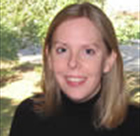
Associate Professor of Cell Biology, University of Virginia
Charting the cytoskeleton: On Sunday I went to an exciting symposium called “Neuronal Cytoskeleton 2.0.” Two talks at the symposium focused on the question of how neurons set up microtubule polarity to be plus-end out in the axon but mixed polarity in dendrites. Melissa Rolls, associate professor of biochemistry and molecular biology at Pennsylvania State University, talked about the gene APC2, and Casper Hoogenraad, professor of cell biology at Utrecht University in the Netherlands, talked about the gene TRIM46.
Each of them talked only about how these proteins play roles in setting up the cytoskeleton of a neuron. APC2 in other cellular contexts influences the WNT pathway, but this seems to be a different function.
The questions they are studying are important, because a neuron needs to make a single long axon to transmit information and multiple dendrites with many branches to receive information. To grow this complex shape, it needs to organize its microtubules the right way so that proteins can be localized to the right places within the cell to allow the neuron to do its job. The microtubules are like the train tracks of the cell.
Research associate, Gazzaley Lab, University of California, San Francisco
Time tracking: Two posters stood out to me for demonstrating the need for identifying autism subtypes and tracking neurobiological patterns over time. Seun Jeon, a postdoctoral fellow at McGill University, identified differential patterns of cortical thickness in children with autism compared to typically developing children. Interestingly, these corresponded with clinical features.
Additionally, Budhachandra Khundrakpam, a research associate also at McGill, showed that group level differences that indicate greater cortical thickness during childhood and adolescence in people with autism than in controls are absent in adulthood. This result also corresponds with behaviors. Together, these findings may provide mechanisms for identifying subtypes of autism and for targeting therapeutics.
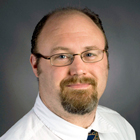
Director, Center for Translational Neuroscience, University of Missouri
Autism on the brain: This year’s Society for Neuroscience meeting is remarkable for the consistent distribution of autism-relevant research presented every day. Also notable is the geography of the autism posters, placed on the farthest end of the convention hall from most of the other presentations. Somebody has to be at the far end, so I guess it’s our turn.
Despite the distance, there were many interesting posters in this morning’s session. Kathryn Unruh, a graduate student in James Bodfish’s lab at Vanderbilt University, reported on evidence suggesting that some of the decrement in social information processing in autism is relative and may be a byproduct of fixed interests. This may have implications for intervention strategies designed to limit hyperfocused interests.
Sibling potential: This afternoon, Joel Frohlich, a graduate student in Shafali Jeste’s lab at the University of California, Los Angeles, reported on alterations in resting state electroencephalography signal complexity. Andrew Marin, the staff research coordinator for Jeste’s lab, reported on alterations in electrical responses in the brain in response to a learning task in infant siblings of children with autism. These siblings are at elevated risk for the condition. These children will be tracked to see if these electrical responses could be a predictive biomarker for autism, which could be a potentially important finding.
For more reports from the 2016 Society for Neuroscience annual meeting, please click here.
12 November 2016: Day One

Director, Center for Translational Neuroscience, University of Missouri
Actin for autism: A symposium today featured a possible role for actin in autism. Actin is critical in regulating dendritic spine formation. Dendritic spines are essential for neuronal communication and plasticity. Several studies have explored their role in autism. Now, studies are investigating the potential role of actin in autism and targeting actin-associated pathways in autism mouse models. The final speaker of the symposium, Eunjoon Kim, professor at the Korea Advanced Institute of Science and Technology and the Institute for Basic Science in Korea, pointed out the need to account for the heterogeneity of autism in these treatment approaches.
Amazing amygdala: In a poster session, Ruth Weir, a postdoctoral researcher in Cynthia Schumann‘s lab at the University of California, Davis, reported increased dendritic spine density in the amygdala of adolescents with autism. This finding may be associated with the high rate of anxiety in people with autism. Jason Lunden, a postdoc in Emanuel DiCicco-Bloom‘s lab at Rutgers University in New Jersey, reported on the significantly augmented stress reactivity in the locus coeruleus, a brain region involved in body movement, in mice missing EN2, a gene linked to autism.
Director, Department of Mental Health and Substance Abuse, World Health Organization
Inspiring audience: Being in a time zone nine hours away from Geneva, Switzerland, I was not at my best on Saturday morning when I gave my lecture, “Global Mental Health and Neuroscience: Challenges and Opportunities,” and participated in the panel dialogue afterwards. However, seeing row after row of people — especially young researchers — eager to hear me and the other panel members made me very excited. What I found particularly inspiring was the high level of interest among neuroscientists in mental health. The questions they asked, the suggestions they made and the commitment they showed was truly amazing.
Neuroscience for mental health: It was wonderful to see some excellent work on display in the poster sessions this afternoon that have direct relevance to mental health care. I found a poster on the brain effects of social isolation in mice particularly interesting, as it may have relevance for preventing mental disorders in humans. I came back with lots of ideas and a bunch of cards from enthusiastic women and men contributing to our knowledge of the brain.
For more reports from the 2016 Society for Neuroscience annual meeting, please click here.
11 November 2016: Heading to San Diego
The 46th annual meeting of the Society for Neuroscience (SfN) kicks off tomorrow morning in San Diego, California.
With an expected 30,000-plus attendees and about half as many presentations, SfN is the largest neuroscience meeting in the world.
The Spectrum team is on-site, covering the key posters and talks relevant to autism research in real time. Attendee reactions from the conference floor will also appear here as a rolling blog.
Check out the daily news coverage on our site. Receive a roundup each day by subscribing to our newsletter, or get updates by following Spectrum on social media. We’ll be posting on Facebook and tweeting live from the conference.
If you are attending the meeting, please share your autism expertise at our wiki-a-thon. The Spectrum wiki is a glossary of autism terms written and edited by scientists. On Monday, 14 November, stop by the Hilton San Diego Bayfront’s Fox Sports Grill at noon to register as an editor. Lunch is on us.
Please also join us on Tuesday, 15 November, at 11 a.m. for a Q&A about autism research on Twitter. Follow us using the handle @Spectrum and participate by including the hashtag #SFNChat. If you’re at the conference, please come see us in person at the Hilton San Diego Bayfront’s Odysea in the 2nd floor lobby.
Like us on Facebook » | Follow us on Twitter @Spectrum» | Join our newsletter
For more reports from the 2016 Society for Neuroscience annual meeting, please click here.
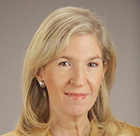 Jacqueline Crawley
Jacqueline Crawley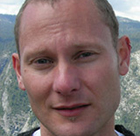
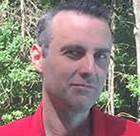
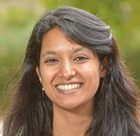
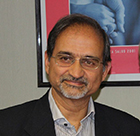

By joining the discussion, you agree to our privacy policy.